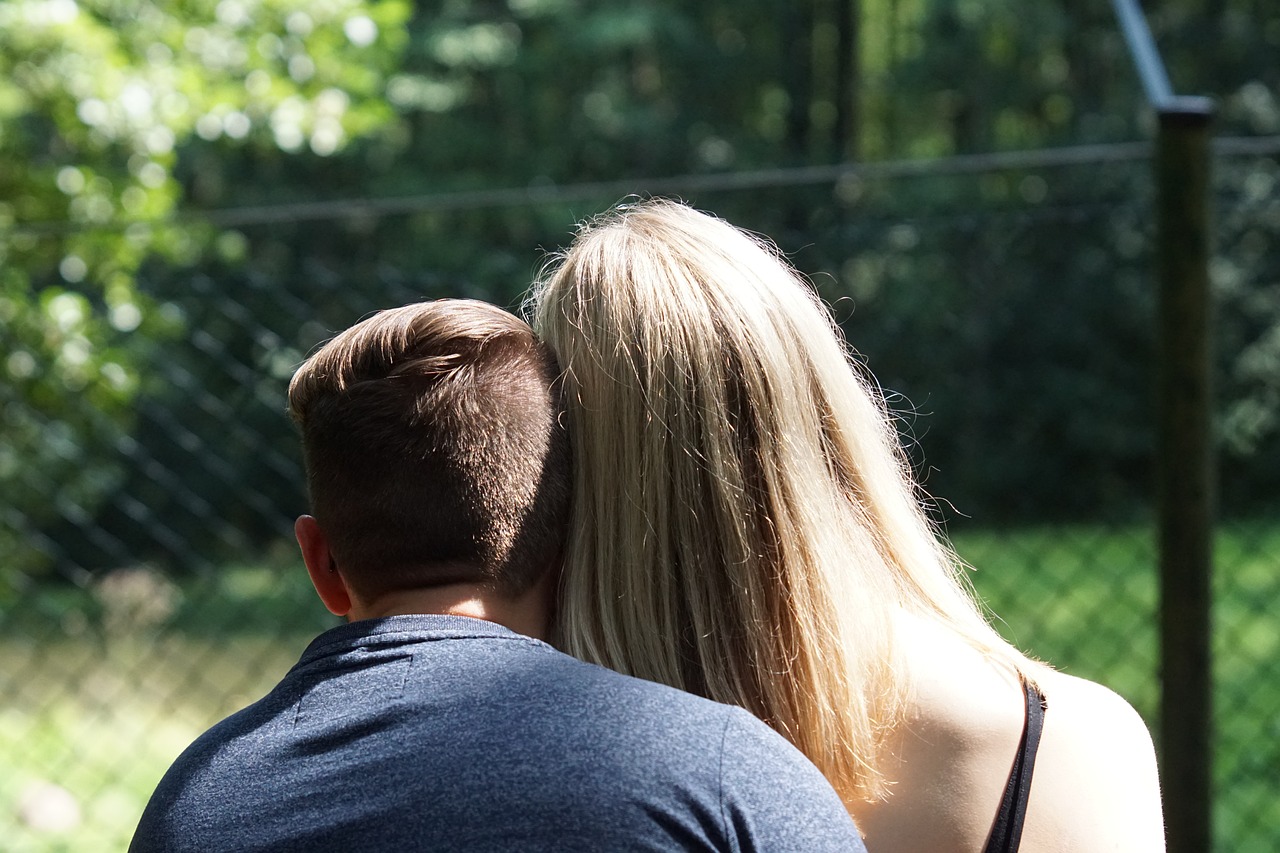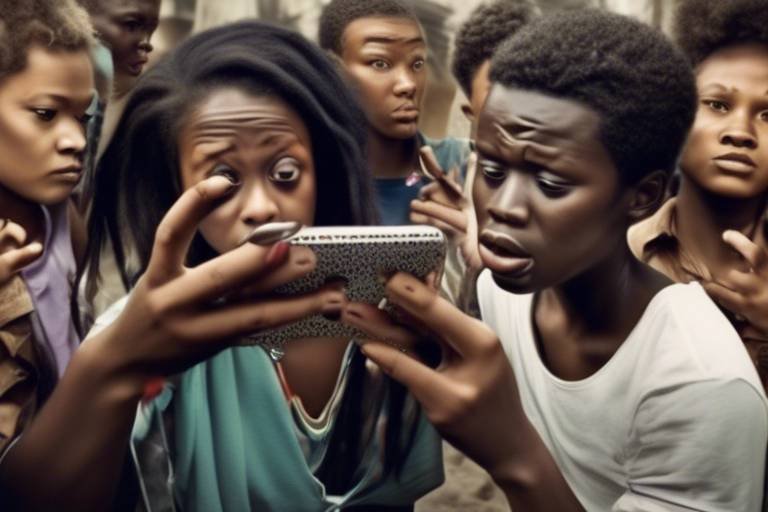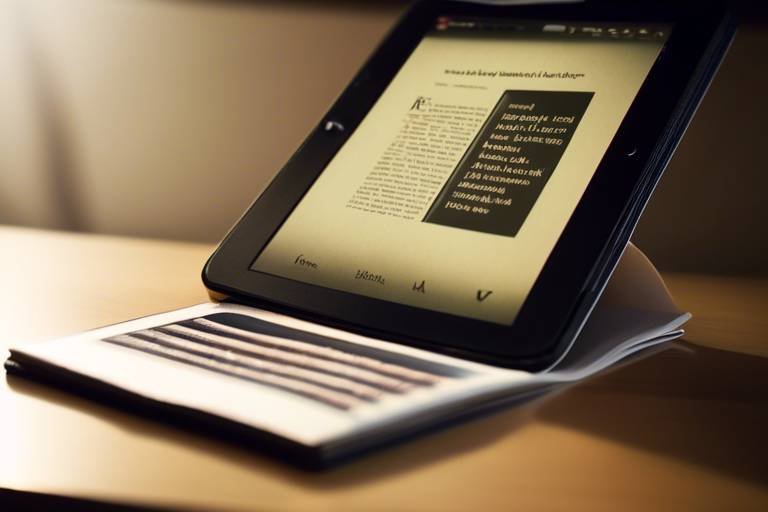The Influence of Technology on Romantic Relationships
In today's fast-paced world, the way we connect with others has undergone a seismic shift, primarily driven by technology. Gone are the days when love letters were the norm, replaced by instant messages and social media posts that can instantly bridge the distance between two hearts. But what does this mean for romantic relationships? This article dives deep into the dual-edged sword that is technology, exploring its profound impacts—both positive and negative—on communication, intimacy, and overall connection in the digital age.
Technology has transformed the way couples communicate, shifting from traditional face-to-face interactions to a myriad of digital messaging platforms. Remember the thrill of a handwritten note? While that charm still exists, today's couples find themselves navigating a landscape dominated by texts, emojis, and video calls. This shift has undeniably altered relationship dynamics. For instance, while texting allows for quick exchanges, it can also lead to misunderstandings due to the lack of non-verbal cues. Have you ever misinterpreted a simple text? It’s easy to see how a playful comment can be taken the wrong way when stripped of tone and context.
Moreover, the convenience of digital communication has its downsides. Couples might find themselves communicating more frequently but with less depth. The emotional connection that comes from a heartfelt conversation can sometimes be lost in a flurry of short messages. So, while technology can keep us connected, it also poses the question: Are we truly connecting on a deeper level?
Social media platforms like Facebook, Instagram, and Twitter have become integral to modern relationships. They offer couples a way to share their lives, from mundane daily activities to significant milestones. However, this constant sharing can enhance intimacy by allowing partners to feel involved in each other's lives, even from afar. But there's a flip side. The curated nature of social media can lead to unrealistic expectations and comparisons. Have you ever found yourself envious of a friend's seemingly perfect relationship? This can create a rift, breeding insecurity and trust issues.
The rise of online dating apps such as Tinder, Bumble, and Hinge has revolutionized how people meet and form romantic connections. In a world where time is of the essence, these platforms offer a convenient way to connect with potential partners. But while swiping right can lead to exciting new relationships, it also raises questions about the depth of these connections. Are we becoming too reliant on algorithms to find love?
Online dating offers a plethora of advantages. For one, it provides access to a larger pool of potential partners than one might encounter in everyday life. Whether you're looking for a casual fling or a serious relationship, the options are virtually endless. Additionally, online dating can be especially beneficial for individuals in niche communities or those with specific interests. Imagine finding someone who shares your love for obscure indie films or your passion for hiking; the possibilities are thrilling!
However, the digital landscape of dating isn't without its challenges. Misrepresentation is a common issue, with individuals often presenting an idealized version of themselves. This can lead to disappointment when meeting in person, as the reality often falls short of the expectations set online. Furthermore, the superficial nature of swiping can lead to connections that lack depth. Are we losing the art of meaningful conversation in our quest for love?
Technology has also made long-distance relationships more feasible than ever. With video calls, instant messaging, and social media, couples separated by miles can maintain their connection. But while these tools can help bridge the gap, they are not a substitute for physical presence. The challenge lies in finding a balance between digital communication and the longing for in-person interactions. How do you keep the spark alive when your partner is thousands of miles away?
Technology influences emotional and physical intimacy in relationships. Digital interactions can enhance closeness, but they can also diminish it. For example, couples might find themselves engrossed in their devices instead of engaging with each other, leading to feelings of neglect. It's crucial to be mindful of how technology is used within relationships to ensure it serves as a tool for connection rather than a barrier.
Emerging technologies like virtual reality (VR) offer new ways for couples to connect. Imagine a couple separated by distance being able to share a virtual space, exploring new worlds together. These immersive experiences can foster intimacy in innovative ways, allowing partners to bond over shared adventures, even when miles apart. The possibilities are exciting, but they also raise questions about the nature of intimacy in a digital world.
While technology can enhance relationships, it can also lead to distractions. Excessive screen time can impact emotional availability and connection in romantic partnerships. Have you ever noticed your partner scrolling through their phone during dinner? These distractions can create barriers to meaningful interactions, making it essential for couples to set boundaries around technology use. After all, the most profound connections often occur when we are fully present with one another.
- How has technology changed the way we date? Technology has made dating more accessible and convenient, allowing individuals to connect with potential partners from the comfort of their homes.
- Can social media negatively impact relationships? Yes, social media can lead to unrealistic expectations and comparisons, which can create insecurities and trust issues between partners.
- What are the benefits of long-distance relationships? Technology allows couples to maintain communication and connection despite physical separation, fostering emotional intimacy.
- How can couples ensure technology enhances their relationship? Setting boundaries around technology use and prioritizing quality time together can help couples maintain meaningful connections.

The Evolution of Communication
In today's fast-paced world, technology has dramatically transformed the way couples communicate. Gone are the days when lovers would sit across from each other, sharing their thoughts and dreams face-to-face. Now, we find ourselves immersed in a digital landscape where text messages, emojis, and video calls have become the norm. This shift has not only changed how we interact but also how we perceive intimacy and connection in our romantic relationships. The convenience of instant communication can be both a blessing and a curse, leading us to question: are we truly connecting, or are we merely exchanging information?
With the advent of smartphones and social media, communication has evolved into something instantaneous and often superficial. Couples can now send a quick text to check in or share a funny meme to lighten the mood. However, this ease of communication can sometimes lead to misunderstandings, as the absence of non-verbal cues like tone and body language can create confusion. For example, a simple text saying, "I'm fine," can carry different meanings based on the context and the sender's emotional state. This ambiguity can lead to unnecessary arguments and emotional distance.
Moreover, the rise of digital communication has fostered a culture of constant connectivity. While it's wonderful to have the ability to reach out to a partner at any time, it also raises the question of whether we are truly present in our relationships. Are we so busy scrolling through our phones that we forget to engage in meaningful conversations? This phenomenon is often referred to as "phubbing" – the act of ignoring someone in favor of your phone. It can create feelings of neglect and insecurity, which can be detrimental to a relationship.
Yet, it's essential to recognize that technology also has its advantages. Couples can use various platforms to share experiences and maintain their bond, even when they are miles apart. For instance, video calls allow partners to see each other and share moments in real-time, bridging the gap that physical distance creates. Additionally, couples can engage in shared activities online, such as watching movies together or playing games, which can enhance their connection and create lasting memories.
To better understand the evolution of communication in relationships, let's take a look at the following table that highlights key differences between traditional and modern communication methods:
| Aspect | Traditional Communication | Modern Communication |
|---|---|---|
| Medium | Face-to-face | Text, Video, Social Media |
| Response Time | Immediate | Instantaneous |
| Emotional Cues | Non-verbal (body language, tone) | Textual and Limited Non-verbal (emojis) |
| Accessibility | Dependent on Location | Global Reach |
As we navigate this digital age, it’s crucial to find a balance between embracing technology and maintaining the depth of our emotional connections. While technology can facilitate communication, it is essential to prioritize face-to-face interactions and ensure that we are not losing the essence of what it means to be truly connected. After all, a relationship thrives on understanding and emotional intimacy, which can sometimes be lost in the noise of notifications and digital distractions.

The Role of Social Media
In today's fast-paced world, social media has become a cornerstone of our daily lives, influencing how we connect with others, especially in romantic relationships. It’s fascinating to think about how platforms like Facebook, Instagram, and Twitter have revolutionized the way couples interact. Gone are the days when a simple phone call or a face-to-face chat was the norm. Now, we have the power to share our thoughts, feelings, and experiences with just a few taps on our screens. But what does this mean for our relationships?
On one hand, social media can serve as a powerful tool for enhancing intimacy and connection between partners. It allows couples to share their lives in real-time, providing a glimpse into each other's daily activities. For example, sending a quick message or sharing a funny meme can spark joy and laughter, creating a sense of closeness. Moreover, social media can help partners stay connected, especially in long-distance relationships, where every little update can feel monumental. The ability to comment on each other’s posts or react to stories can foster a unique bond that might not be as easily achieved through traditional communication methods.
However, the impact of social media isn't all sunshine and rainbows. It also introduces a myriad of challenges that can complicate relationships. For instance, the constant exposure to curated versions of other people's lives can lead to feelings of inadequacy and jealousy. When one partner sees their significant other interacting with attractive friends or liking posts from exes, it can trigger insecurities. This phenomenon is often referred to as the "highlight reel" effect, where individuals compare their everyday experiences to the seemingly perfect lives portrayed online.
Moreover, social media can sometimes create a false sense of connection. While it might seem like we are engaging with our partners through likes and comments, these interactions can lack the depth and emotional resonance of face-to-face conversations. In fact, studies have shown that excessive social media use can lead to feelings of loneliness and isolation, which can be detrimental to romantic relationships. Couples may find themselves sitting together, yet both are engrossed in their devices, missing out on meaningful interactions.
To navigate these waters, it’s essential for couples to establish healthy boundaries regarding social media use. Here are some strategies that can help:
- Open Communication: Discuss how social media makes you feel and set expectations about online interactions.
- Quality Time: Make a conscious effort to put down the devices and engage in face-to-face conversations.
- Limit Exposure: Consider unfollowing accounts that trigger jealousy or insecurity.
Ultimately, social media is a double-edged sword in the realm of romantic relationships. It has the potential to enhance connection and intimacy, yet it also poses risks that can undermine trust and emotional availability. By being mindful of how we use these platforms, couples can harness the positive aspects of social media while mitigating its negative effects.
| Question | Answer |
|---|---|
| Can social media improve communication in relationships? | Yes, it can enhance communication by allowing couples to share updates and stay connected in real-time. |
| What are the risks of social media in relationships? | Social media can lead to jealousy, insecurity, and a false sense of connection, potentially harming the relationship. |
| How can couples manage social media use? | By setting boundaries, communicating openly, and prioritizing quality time together. |

In today's fast-paced world, the way we form romantic connections has undergone a remarkable transformation, largely driven by technology. Gone are the days when meeting someone meant striking up a conversation at a coffee shop or being introduced by mutual friends. Instead, online dating has become a prevalent means of finding love, reshaping the landscape of romantic relationships. With a simple swipe or click, individuals can explore a vast array of potential partners, each offering unique backgrounds and interests.
The rise of dating apps like Tinder, Bumble, and Hinge has revolutionized how we approach dating. These platforms have introduced a new lexicon of romance, where profiles are curated with catchy bios and eye-catching photos, often resembling a mini-resume. This shift has not only made dating more accessible but has also created a culture where people can connect with others who share similar interests and values. However, it’s essential to recognize that this convenience comes with its own set of dynamics and challenges.
One significant trend in online dating is the increasing emphasis on niche dating apps. While mainstream platforms cater to a broad audience, niche apps focus on specific communities or interests. For instance, there are dating apps for pet lovers, vegans, and even those who identify as part of the LGBTQ+ community. This specialization allows individuals to find partners who resonate with their lifestyle choices and beliefs, fostering deeper connections from the get-go.
Another trend is the integration of advanced technology into dating platforms. Features such as video calls and virtual dates have gained popularity, especially in the wake of the COVID-19 pandemic. These tools enable couples to interact in real-time, bridging the gap between online and offline dating. The ability to see each other face-to-face, even through a screen, adds a layer of intimacy that text alone cannot provide. Moreover, some apps are now incorporating AI-driven algorithms to enhance match suggestions, making it easier for users to find compatible partners based on their preferences and behaviors.
However, while online dating opens up a world of possibilities, it also presents unique challenges. Misrepresentation is a common issue, where individuals may present themselves in a more favorable light than reality, leading to disappointment when meeting in person. Additionally, the superficial nature of swiping can sometimes lead to a lack of emotional depth in connections. It's crucial for users to approach online dating with a healthy dose of skepticism and self-awareness.
In conclusion, online dating trends are continually evolving, reflecting the changing dynamics of modern relationships. As technology continues to shape how we connect, it's essential to navigate this digital landscape mindfully. Embracing the benefits while being aware of the pitfalls can lead to fulfilling romantic connections that stand the test of time.
- Is online dating safe? - While online dating can be safe, it’s important to take precautions such as meeting in public places and informing friends or family about your plans.
- How do I create an appealing dating profile? - Use clear, recent photos and write a bio that reflects your personality and interests. Authenticity is key!
- Can long-distance relationships work if we met online? - Yes, many long-distance relationships thrive, especially with the help of technology for regular communication.

In today’s fast-paced world, online dating has emerged as a revolutionary way for people to connect and find love. One of the most significant advantages of online dating is the sheer convenience it offers. Gone are the days when you had to rely solely on chance encounters at bars or social gatherings. Now, with just a few clicks, you can access a vast pool of potential partners who share your interests and values. Imagine being able to filter through thousands of profiles, finding someone who not only catches your eye but also aligns with your lifestyle and relationship goals!
Moreover, online dating platforms provide a unique opportunity to expand your social circle. Whether you live in a small town or a bustling city, the internet allows you to connect with individuals you might never meet in your daily life. This expanded reach can lead to meaningful connections that transcend geographical boundaries. You can meet people from different backgrounds, cultures, and even countries, enriching your dating experience like never before.
Another fantastic benefit of online dating is the ability to engage in thoughtful communication before meeting in person. Many platforms encourage users to share their interests and engage in conversations through messaging. This allows couples to establish a rapport and build a foundation of trust before taking the plunge into a face-to-face meeting. Think of it as a warm-up; you get to know each other’s personalities, quirks, and preferences without the pressure of an in-person date. This can lead to deeper emotional connections and an increased likelihood of compatibility.
Additionally, online dating can be particularly beneficial for those who might feel shy or anxious about traditional dating scenarios. For introverts or individuals who struggle with social anxiety, the digital space provides a comfortable environment to express themselves. They can take their time crafting messages and presenting their best selves without the immediate pressure of a live interaction. This can lead to more genuine connections, as individuals feel freer to be themselves.
Lastly, let’s not forget the variety that online dating brings into the mix. With countless dating apps and websites catering to different niches—be it for casual dating, serious relationships, or even specific interests—there’s something for everyone. This diversity allows users to tailor their dating experience to their specific needs and preferences, ensuring that they are more likely to find someone who resonates with their personal desires.
In summary, the benefits of online dating are vast and varied. From convenience and expanded social circles to thoughtful communication and the ability to cater to individual preferences, it has changed the landscape of modern romance. So, if you’re still on the fence about diving into the world of online dating, remember that love in the digital age is not just possible; it’s thriving!
- Is online dating safe? - While online dating can be safe, it's essential to take precautions. Always meet in public places and inform a friend about your plans.
- How do I choose the right dating platform? - Consider what you're looking for in a relationship and choose a platform that aligns with those goals.
- Can online dating lead to serious relationships? - Absolutely! Many people have found long-term partners through online dating.
- What should I include in my profile? - Be honest and showcase your interests and personality. A clear profile picture and a well-written bio can make a significant difference.

Online dating has undoubtedly changed the landscape of romantic relationships, but it comes with its own set of challenges that can complicate the quest for love. One of the most significant issues is misrepresentation. In a world where profiles can be easily edited, individuals might present an idealized version of themselves. This can lead to feelings of betrayal when the reality doesn't match the expectation. Imagine meeting someone who looks completely different from their photos—it's like opening a gift only to find it empty! This disconnect can create a shaky foundation for any budding relationship.
Another challenge is the prevalence of superficial connections. With countless profiles to swipe through, it’s easy to get caught up in the thrill of the hunt rather than forming genuine connections. Many users find themselves engaging in a game of "hot or not," which can reduce the depth of interactions. When physical attraction becomes the sole focus, emotional compatibility often takes a backseat. This can lead to a cycle of fleeting encounters rather than meaningful relationships.
Moreover, the sheer number of options available can lead to decision fatigue. With so many potential partners at your fingertips, it can be overwhelming to choose one. This abundance can create a paradox of choice, where the fear of missing out (FOMO) on a better match keeps individuals from fully committing to anyone. It's like being in a candy store—so many choices that you end up leaving with nothing at all!
Additionally, online dating can foster a sense of immediacy that may not align with traditional dating norms. People often expect quick responses and instant gratification, which can lead to misunderstandings and frustration. When a message goes unanswered, it can trigger feelings of insecurity or doubt. This pressure can make dating feel more like a chore than an enjoyable experience.
Lastly, safety is a significant concern in the online dating world. While many platforms have implemented measures to ensure user safety, the risk of encountering dishonest individuals remains. It's essential to remain vigilant and prioritize personal safety when engaging with potential partners online. Always remember, it’s better to be cautious than to end up in an uncomfortable situation.
In summary, while online dating opens up exciting avenues for meeting new people, it’s essential to navigate these challenges with care. By being aware of issues like misrepresentation, superficial connections, decision fatigue, the pressure of immediacy, and safety concerns, individuals can better prepare themselves for the digital dating landscape.
- What should I do if I feel misled by someone I met online? It's important to communicate your feelings honestly. If you feel comfortable, address the issue directly with the person. If not, it might be best to move on.
- How can I ensure my safety while online dating? Always meet in public places, tell a friend where you're going, and trust your instincts. If something feels off, don’t hesitate to leave.
- Is it normal to feel overwhelmed by the number of choices? Yes! Many people experience decision fatigue in online dating. Take breaks if you need to, and focus on quality over quantity.

In today's fast-paced world, long-distance relationships have become more common than ever. With partners often separated by miles, the challenge of maintaining a strong emotional connection can seem daunting. However, technology has emerged as a powerful ally in this journey, offering a plethora of tools that help couples bridge the gap. Imagine being able to see your partner's smile, hear their laughter, and share moments together, all from the comfort of your own home. Sounds magical, right? But how exactly do we navigate these waters?
First and foremost, communication is the lifeblood of any relationship, and it's even more crucial in long-distance scenarios. Thanks to video calls, instant messaging, and social media, staying in touch has never been easier. Couples can schedule regular video calls to share their daily experiences, making it feel like they are part of each other's lives despite the distance. Think of it as being on a virtual date, where you both can enjoy dinner together over a screen. But remember, it's essential to maintain a balance; too much communication can feel overwhelming, while too little can lead to feelings of neglect.
Moreover, technology allows for creative ways to express love and affection. Sending surprise gifts or handwritten letters through the mail can add a personal touch that text messages sometimes lack. In fact, many couples have started using apps specifically designed for long-distance relationships, which include features like countdowns to the next visit, shared playlists, and even games to play together. These tools can help keep the spark alive and remind you both of the love you share, despite the miles.
However, it’s not all rainbows and butterflies. Long-distance relationships can also introduce unique challenges that require careful navigation. Trust becomes a central theme, as partners may grapple with insecurities and doubts about each other's fidelity. It's crucial to have open conversations about feelings, expectations, and boundaries. Establishing trust is like building a bridge; it requires time, effort, and a solid foundation. Without it, the distance can feel even more isolating.
Additionally, managing time zones can be a logistical nightmare. Scheduling calls or virtual dates can sometimes feel like solving a complex puzzle. To make this easier, couples can create a shared calendar to keep track of each other’s availability. This way, both partners can plan their days around those precious moments when they can connect, ensuring that neither feels neglected or forgotten. Think of it as setting a date night, even if it’s just over a screen.
In conclusion, navigating long-distance relationships can be challenging, but with the right tools and mindset, couples can thrive despite the miles. Embrace the technology available to you, communicate openly, and keep the romance alive through creative expressions of love. After all, distance may separate you physically, but it can never diminish the bond you share if you work together to maintain it.
- How often should we communicate in a long-distance relationship? It varies by couple, but regular communication is key. Find a balance that works for both partners to avoid feeling overwhelmed or neglected.
- What are some creative ways to stay connected? Consider virtual date nights, sending surprise gifts, or using apps designed for long-distance couples to share experiences and feelings.
- How can we build trust in a long-distance relationship? Open and honest communication is essential. Discuss insecurities, set expectations, and establish boundaries to foster a trusting environment.
- What if one partner feels neglected? It’s important to address these feelings immediately. Have an open discussion about each other's needs and find solutions together.

In today’s fast-paced digital world, the notion of intimacy has evolved dramatically, reshaped by the very technology that connects us. It’s fascinating to think about how text messages and video calls have become the lifelines of modern relationships, allowing couples to bridge the distance, share moments, and express love in ways that were unimaginable just a few decades ago. But, while technology can bring partners closer together, it can also create barriers that hinder emotional and physical intimacy.
One of the significant ways technology influences intimacy is through the convenience it offers. Imagine being able to send a sweet message or a flirty emoji to your partner at any moment, no matter where you are. This instant communication can keep the spark alive, making your partner feel valued and cherished. However, this convenience comes with a price. The reliance on digital communication can sometimes lead to a lack of depth in conversations. Have you ever noticed how easy it is to misinterpret a text? A simple “K” can spiral into misunderstandings and unnecessary arguments, highlighting how digital interactions can sometimes diminish the emotional connection.
Moreover, the rise of virtual reality (VR) technology is opening up new avenues for intimacy. Imagine putting on a VR headset and sharing a virtual sunset with your loved one, even if they’re miles away. These immersive experiences can foster a sense of closeness that traditional texting simply can’t match. It’s like being on a romantic getaway without leaving your living room! However, the question remains: can these virtual experiences replace the warmth of a real hug or the thrill of a spontaneous date night? While they can enhance intimacy in unique ways, they also pose the risk of making physical presence feel less essential.
Another aspect to consider is the impact of digital distractions. With the constant pinging of notifications, it’s easy to find yourself scrolling through social media instead of engaging with your partner. This can lead to feelings of neglect and emotional distance. Have you ever felt like your partner was more interested in their phone than in your conversation? This scenario is becoming increasingly common, as technology can sometimes create a physical presence while simultaneously fostering emotional absence. The challenge lies in finding a balance between the digital world and the real world, ensuring that technology enhances rather than detracts from our intimate connections.
To illustrate the dual impact of technology on intimacy, let’s take a look at the following table:
| Positive Impacts | Negative Impacts |
|---|---|
| Instant communication strengthens bonds | Misinterpretation of messages can lead to conflicts |
| Virtual experiences create shared memories | Physical absence can feel more pronounced |
| Access to resources for relationship advice | Digital distractions can hinder quality time |
Ultimately, the impact of technology on intimacy is a double-edged sword. It offers incredible opportunities for connection and closeness, yet it also presents challenges that couples must navigate. As we continue to embrace the digital age, it’s crucial to remain aware of how our devices shape our relationships. The key is to use technology as a tool to enhance intimacy rather than a barrier that separates us from those we love.
- How can technology improve intimacy in relationships?
Technology can enhance intimacy by facilitating instant communication, allowing couples to share experiences through video calls, and providing access to resources that can help strengthen their bond. - What are some risks of relying too much on digital communication?
Excessive reliance on digital communication can lead to misunderstandings, emotional distance, and a lack of depth in conversations, which may negatively affect the relationship. - Can virtual reality replace physical intimacy?
While virtual reality can create immersive experiences that foster closeness, it cannot fully replace the emotional and physical connection that comes from being together in person. - How can couples manage digital distractions?
Setting boundaries for device use during quality time, such as having tech-free dinners or date nights, can help couples focus on each other and strengthen their emotional connection.

In the realm of modern romance, virtual reality (VR) is emerging as a game-changer, offering couples unique ways to connect that were previously unimaginable. Imagine being able to share a sunset on a distant planet or explore the depths of the ocean together—all from the comfort of your living room. This technology doesn’t just provide entertainment; it creates immersive experiences that can enhance emotional bonds, making distance feel less daunting.
One of the most exciting aspects of VR is its ability to foster shared experiences. Couples can engage in activities together, such as playing games, going on virtual vacations, or even attending concerts. These shared adventures can reignite the spark in a relationship, especially for those who may feel stuck in a routine. The thrill of exploring new worlds together can transform a mundane evening into a memorable date night, helping partners feel more connected and alive.
However, the impact of VR on intimacy isn't purely positive. While it can enhance emotional closeness, there's a risk of over-reliance on technology. Couples might find themselves preferring virtual interactions over real-life ones, leading to a disconnect in their physical relationship. It’s crucial to strike a balance between the digital and the tangible. Just as we wouldn’t want to live solely on fast food, immersing ourselves exclusively in virtual experiences can leave our emotional diets lacking.
Moreover, VR can also create a unique space for couples to explore their intimacy in a safe environment. For those who may feel shy or uncomfortable discussing certain aspects of their relationship, VR can provide a less intimidating platform. Couples can experiment with scenarios that might be awkward in real life, opening doors to deeper conversations about desires and boundaries.
As we delve deeper into the world of virtual reality, it’s essential to recognize both its potential and its pitfalls. Here’s a quick look at how VR can impact intimacy:
| Benefits of VR for Intimacy | Potential Drawbacks |
|---|---|
| Enhances shared experiences | Risk of preferring virtual over real interactions |
| Encourages open communication | Can lead to emotional detachment if overused |
| Offers a safe space for exploration | May create unrealistic expectations |
In conclusion, virtual reality holds incredible potential to reshape how couples experience intimacy. By embracing this technology thoughtfully, partners can explore new dimensions of their relationship, creating a blend of the virtual and the real that keeps their connection vibrant. Just like any tool, it's all about how we choose to use it—balancing excitement with genuine connection to ensure that love thrives, both online and offline.
- Can virtual reality improve my relationship? Yes, it can enhance shared experiences and foster communication, but it's important to balance it with real-life interactions.
- Are there risks associated with using VR in relationships? Yes, over-reliance on VR can lead to emotional detachment and unrealistic expectations.
- What types of activities can couples do in VR? Couples can explore virtual worlds, play games, attend events, or even participate in guided experiences focused on intimacy.

The digital age has ushered in a plethora of communication tools that can enhance our romantic relationships, but it has also introduced significant risks, particularly in the form of digital distractions. Imagine sitting across from your partner at dinner, yet both of you are glued to your smartphones, scrolling through social media or responding to messages. Sounds familiar, right? This scenario highlights how technology, while meant to connect us, can sometimes create a chasm between partners. The irony is palpable: we have the world at our fingertips, yet we can feel more isolated than ever.
One of the most pressing concerns is how these distractions can affect emotional availability. When partners are constantly checking their devices, they may miss out on crucial moments of connection. This can lead to feelings of neglect or even resentment. Research suggests that couples who spend excessive time on their devices report lower levels of relationship satisfaction. It’s like trying to build a sandcastle while the tide is coming in; no matter how hard you try, the waves of distraction keep washing away your efforts.
Moreover, the phenomenon of "phubbing"—a term used to describe the act of snubbing someone in favor of your phone—has become increasingly common. It’s not just about the act of being on your phone; it’s about the message it sends. When one partner feels sidelined due to the other’s digital engagement, it can create a rift in trust and intimacy. This is particularly concerning in romantic relationships, where emotional connection is paramount. The lack of eye contact and genuine interaction can lead to misunderstandings and a decline in the quality of communication.
To illustrate this point, consider the following table that summarizes the effects of digital distractions on relationships:
| Digital Distraction | Impact on Relationship |
|---|---|
| Excessive Phone Use | Lower emotional connection and satisfaction |
| Social Media Engagement | Increased jealousy and insecurity |
| Gaming or Streaming Content | Reduced quality time spent together |
So, what can couples do to mitigate these risks? Setting boundaries around technology use can be a game-changer. For instance, designating "tech-free" times during meals or before bed can pave the way for deeper conversations and reconnections. Additionally, being mindful of how and when you engage with your devices can help maintain a healthy balance. Think of it as a dance where both partners need to be in sync; if one is distracted, the rhythm is lost.
In conclusion, while technology has the potential to enhance our relationships, it also brings with it the risk of digital distractions that can erode intimacy and connection. By being aware of these risks and actively managing our tech use, we can foster a more fulfilling and connected romantic life. After all, love is best experienced in the moment, not through a screen.
- How can I reduce digital distractions in my relationship? Start by setting specific times when both partners agree to put away their devices and focus on each other.
- What is phubbing, and why is it harmful? Phubbing refers to ignoring someone in favor of your phone, which can lead to feelings of neglect and decreased relationship satisfaction.
- Can technology ever enhance intimacy in relationships? Yes, when used mindfully, technology can facilitate communication and connection, especially in long-distance relationships.
Frequently Asked Questions
- How has technology changed the way couples communicate?
Technology has revolutionized communication between couples, moving from traditional face-to-face interactions to more digital forms like texting and video calls. This shift allows for instant communication, making it easier to stay connected, but it can also lead to misunderstandings due to the lack of non-verbal cues.
- What role does social media play in romantic relationships?
Social media can both enhance and challenge romantic relationships. On one hand, it allows couples to share experiences and stay connected with friends and family. On the other hand, it can lead to jealousy and insecurity if not managed properly, especially when partners compare their relationships to others.
- Are online dating platforms effective for finding love?
Yes, online dating platforms can be effective in connecting people who might not meet otherwise. They offer convenience and access to a wider range of potential partners. However, it’s important to approach these platforms with caution, as they can also lead to superficial connections.
- What are some challenges of online dating?
While online dating has its perks, it also comes with challenges, such as misrepresentation and the potential for superficial interactions. Users may present themselves in a way that doesn't reflect reality, leading to disappointment when meeting in person.
- How can technology help maintain long-distance relationships?
Technology has made it much easier for couples in long-distance relationships to stay connected. Tools like video calls, messaging apps, and social media allow partners to communicate regularly, share experiences, and maintain emotional intimacy despite the physical distance.
- Can technology enhance emotional intimacy in relationships?
Yes, technology can enhance emotional intimacy through various forms of communication, like texting and video chats, which allow partners to express feelings and share moments in real-time. However, it’s crucial to balance digital interactions with in-person connections to foster deeper intimacy.
- What are the risks of digital distraction in relationships?
Digital distractions, such as excessive screen time and social media use, can negatively impact emotional availability and connection in relationships. It’s essential for couples to set boundaries and prioritize quality time together to mitigate these risks.
- How can virtual reality foster intimacy in relationships?
Virtual reality offers immersive experiences that can help couples connect in new ways, such as enjoying virtual dates or shared activities. These experiences can enhance feelings of closeness and intimacy, especially for long-distance couples.



















